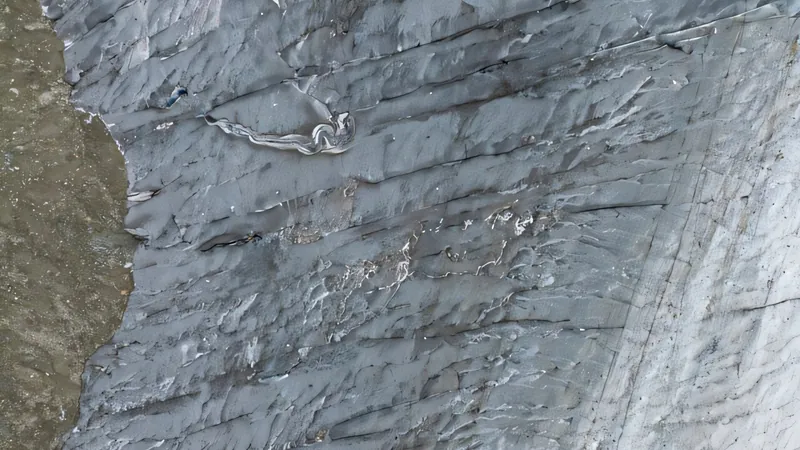
Revolutionary Fiber Optics Unveil Secrets of Glacial Icequakes
2025-04-15
Author: Wei
Transforming Glacier Monitoring with Fiber Optics
In a groundbreaking study presented at the Seismological Society of America’s Annual Meeting, researchers have harnessed the power of fiber optic cables on a Swiss glacier to detect seismic signals from crevasses, shedding light on the phenomenon of icequakes. This innovative technology is poised to revolutionize how we monitor these critical geological events.
Understanding Crevasses: The Heart of Glacier Movement
Crevasses are more than just icy fissures; they play a vital role in the stability of glaciers by providing a pathway for meltwater to flow to the rocky glacier bed. This can significantly accelerate glacier movement and melting. However, the harsh conditions found in crevassed glaciers complicate the installation of traditional seismic instruments.
The Unique Nature of Icequakes
Unlike the forces generated by tectonic earthquakes, the seismic signals produced during an icequake arise from the specific opening of cracks. Tom Hudson, a researcher from ETH Zürich, describes it as a "crack source," emphasizing its distinct nature compared to other seismic events.
A Groundbreaking Approach: Real-World Testing with Fiber Optics
The research team, led by Hudson and Andreas Fichtner, deployed a dense 2D grid of fiber optic cable within the crevasse-filled Gornergletscher during a pivotal moment when the seasons changed from summer to winter. This timing not only avoided snow-covered crevasses but also allowed for optimal placement of the fiber optic cables.
To ensure effective data collection, the team had to ensure the fiber optics were well coupled with the ice. Hudson explained that the fibers melted slightly into the glacier during the warm daytime, creating an ideal bond that froze overnight.
A Stunning Discovery: Monitoring 951 Icequakes!
The research team successfully detected and located 951 icequakes, observing distinct seismic waveforms that offered insight into fluid movements within crevasses. The analysis revealed that the resonant signals were likely due to seismic waves bouncing between the fractures, rather than solely from water movement.
Fiber Optics vs. Traditional Seismic Tools
In their comparison with traditional seismic nodes, the fiber optic system proved to be nearly 20 times more effective at collecting data. Hudson noted that although processing such a vast volume of data presents challenges, it allows for a comprehensive view of the seismic activity.
Unlocking New Possibilities in Seismology
Fiber optic cables are not only sensitive to a wider range of frequencies but can also capture low-frequency signals that persist over long periods. Hudson aims to utilize this technology to create detailed 3D images of the ice subsurface, providing invaluable insights into fracture extents and the overall integrity of the glacier.
Looking to the Future
The pursuit of quantifying fracture dynamics in glaciers is just beginning. Hudson’s vision is to develop a deeper understanding of where icequakes originate and how they relate to the glacier's health. As fiber optics surface as a game-changer in glaciology, the implications for monitoring glaciers and understanding climate change grow ever more essential.


 Brasil (PT)
Brasil (PT)
 Canada (EN)
Canada (EN)
 Chile (ES)
Chile (ES)
 Česko (CS)
Česko (CS)
 대한민국 (KO)
대한민국 (KO)
 España (ES)
España (ES)
 France (FR)
France (FR)
 Hong Kong (EN)
Hong Kong (EN)
 Italia (IT)
Italia (IT)
 日本 (JA)
日本 (JA)
 Magyarország (HU)
Magyarország (HU)
 Norge (NO)
Norge (NO)
 Polska (PL)
Polska (PL)
 Schweiz (DE)
Schweiz (DE)
 Singapore (EN)
Singapore (EN)
 Sverige (SV)
Sverige (SV)
 Suomi (FI)
Suomi (FI)
 Türkiye (TR)
Türkiye (TR)
 الإمارات العربية المتحدة (AR)
الإمارات العربية المتحدة (AR)